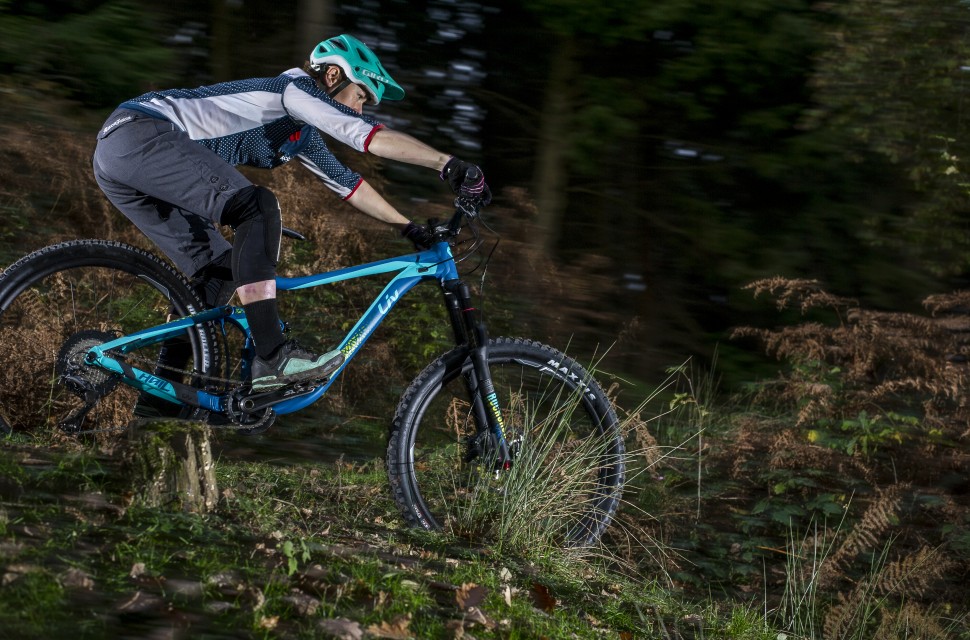
- Maestro linkage is supple and supportive
- It's quite light for a long travel bike
- Short reach and high BB don't offer a stable ride
- Dropper post is too short
The Liv Cycling Hail is a long travel bike for the ladies with plenty of all mountain intentions. It’s a bike that has been designed from the ground up by Liv using data derived from thousands of women from all over the globe. It offers a reasonable spec and a nimble ride but with some geometry woes that could have been easily avoided.
Same spec....
The Liv Hail is one of a rare breed of women-specific bikes, falling into a category on which the jury still remains out with regards to the necessity of geometry just for women. The Hail 2 is the aluminium and therefore cheaper version of the 2018 range, priced at £2,799.
Although geometry differs (more on that later) the Hail shares the same 160mm Maestro suspension platform with a one-piece rocker linkage for a Trunnion Shock and the oversized headset bearings (OverDrive) up front as seen on the unisex counterpart the Reign. The price is reasonably similar to the price of the Giant Reign 2 and therefore spec list is almost identical too, save the regular changes of grips and saddle for women’s preferences. The Hail does, however, swap out the Giant own brand dropper post for a shorter version, despite identical length seat tubes of the two bikes. Us women also get an 11-46T cassette and 170mm SLX cranks instead of the 10-speed 11-42T cassette and 175mm Praxxis cranks on the Reign.
Elsewhere the spec is pretty much what you’d expect for a bike of this price with Rockshox Yari forks (160mm) and a Rockshocxs Deluxe RT shock taking care of the suspension. There is, as mentioned, an SLX 1 x drivetrain with a 30T chainring and Shimano Deore brakes, which are actually the better option from the Shimano stable at the moment as they don’t feature the ‘wandering bite point’ present on SLX’s and above. It’s pleasing to see a bike at this price being sold with ready to ride tyres – a quite honestly brilliant 2.5” Maxxis Shorty Wide Trail EXO 3C Maxx Terra on the front and a 2.4” High Roller II EXO on the rear. The rest of the kit is Giant’s own brand stuff, 25mm internal width rims, Giant hubs, bars, grips, dropper and finally a Truvative Descendant stem.
Different geometry….
Geometry is where the Liv really gets interesting and maybe for not all the right reasons either. Liv stresses that the Hail is not an altered Reign but it’s hard not to make comparisons. Take a glance at both the pages on the website for the Hail and for the Reign and you’ll be bombarded with rhetoric about fast descending and being, buzz word alert, enduro-capable. The bikes certainly sound like they have the same purpose in mind but they sport quite different geometry to achieve the same goal. Liv say “We did not take the Reign and make adjustments, in order to create Hail. Instead, we look at full body dimensions and also dynamic body features such as muscular activity and strength patterns to dictate our initial frame builds, and then we provide prototype frames to athletes for testing and feedback.”
So, they use a database of thousands of female measurements to separate the differences between men’s and women’s bodies based on averages and then design a bike around this platform. Sounds good right? In theory, yes, but Liv seems to have missed the mark where specific geometry steps away from being good geometry to being inferior in some places to the Giant Reign and other bikes in its class.
What’s the difference then?
I’ll explain myself and I’ll start with a positive; the Hail comes in one size smaller than the Reign which is great, meaning smaller riders can now fit aboard this brand. The negative here though is that the Hail only comes in sizes XS, small and medium and considering I’m 5’4 and rode a medium it leaves riders any taller than me probably needing to step over the Reign in a large instead.
Secondly, the head angle of the Hail is steep for an all mountain bike at 66° (a full degree steeper than the Reign). I have come to realise in my time riding bikes that you don’t necessarily need a super slack head angle for a good ride as long as the reach figure is roomy, which at 439mm on the size medium it’s not really, this in conjunction with a 50mm stem produces a twitchier ride. On a bike that sets out to be conquering steep mountain descents, I’d expect the head angle to play in the 65° ball park for a few more ‘get out of jail’ free cards. Liv says, “The bike was introduced in 2015 when trail bike geometry was still somewhat conservative and since then things have changed, trending towards slacker head angles, steeper seat tube angles and shorter stems, this trend will be considered in our future projects.” Liv also told me; “the head angle was based on the initial idea to improve front-end control for technical climbs, but then also confirmed by athlete feedback.” In my opinion longer chainstays, a longer wheelbase and a steeper effective seat tube angle will provide a more efficient climber no matter what the head angle of the bike.
As mentioned the reach figure comes in at 439mm, this is 20mm shorter than the Reign on a bike of the same model size. For 2018 Giant stretched the reach of their bikes to give riders more room in the cockpit, a longer wheelbase and a more stable ride. Sadly Liv didn’t follow suit with the Hail, although props have to be given to the female specific brand for steepening the seat tube somewhat (one degree to 74°), the Hail climbs adequately but it’s a sit and spin affair rather than a sprightly one, adept at technical sections. The shorter reach and steeper head angle leave the Hail with a wheelbase of 1188mm, it has got a lot of catching up to do if it wants to more proficient when things get fast.
Finally, Liv finishes the whole thing off by giving the Hail a bottom bracket drop of just 5mm. I’ve measured the actual bottom bracket height of the Hail and it’s a rather lofty 352mm. Lower bottom brackets are preferred for bikes with a downhill theme as they lower the centre of gravity of the bike making the bike more settled and stable. Liv told me they chose to keep the high bottom bracket to prevent pedal strikes, they also say the centre of gravity was kept low by the use of the Trunnion shock mount. Other bikes, though, benefit from the Trunnion mount and a low BB, lowering the centre of gravity even further.
Liv quote research saying that women have shorter torso’s and longer legs than men and that a large amount of a women’s strength comes from their legs, effecting their weight distribution. The brand says that “if you put a woman on the correct size men’s frame, she will likely be bent too far over the bike – resulting in an extreme back angle – and be too stretched out – resulting in an extreme armpit angle.” Here’s where I think they have missed a trick; instead of keeping a short reach as they have done with the Hail they could have lengthened the reach to match the Reign whilst steepening the effective seat angle, therefore shortening the effective top tube. This would have given the female riders all the benefits of a more stable and confidence giving ride when descending from the lengthen reach and wheelbase whilst the steepened effective seat angle would bring the rider closer to the bars for climbing (the top tube will be shorter, remember) making climbing more comfortable and much more efficient. The rider would be able to centre herself on the bike easily and she’d have a better time all round. As it stands it’s difficult to find the centre of the Hail and stay there, planted, secure and able to weight both the front and back wheel effectively.
How does it ride?
I’ve talked a lot about geometry and I’ve compared this bike to the Reign on paper, but I guess most of you are reading this review to find out how the Liv Hail 2 rides. Despite what you think I’m about to say given the above critique, it's not an altogether bad affair! Climbing on the Hail is average at best, there are better climbing bikes out there at the moment but the Hail does ok, if a slow grind to the top is all you are after. As I mentioned earlier the seat angle of the Hail is steeper than the Reign so it does climb slightly more efficiently than its brother but it’s marginal. It's pretty light too, we weighed our medium test bike at just a hair over 31lbs. The bike is well geared for its likely pastimes, the 30T chainring and the 11-46T cassette seeing up most climbs in good fashion, although that jump between the 37t and the 46T cog is massive and unnecessary when Sunrace provide the same range with a much nicer 36-40-46T transition.
Whilst the seated position of the bike felt roomy enough, owing to that slack seat angle, whilst descending it felt cramped and my normal 760mm wide bars felt too narrow. Widening the bars to 780mm made for a roomier, more comfortable descending position and more confidence but this is just a cover-up for the short reach, at 5’4 (160cm) 780mm wide bars a are too wide for me and I struggle to weight the front wheel as effectively when following gravity.
When descending, the Maestro dual pivot is pretty effective at soaking up those bumps big and small. It provides plenty of traction and a touch of ‘pop’ when you want it, the Trunnion mount shock is sensitive and supple at the beginning of its travel and provides plenty of support throughout the stroke. I ran the Deluxe shock without any rebound damping applied, something that is becoming a regular occurrence for me on new metric shocks. The Yari forks specced give traditional Yari like performance, sensitive in the early stroke but lacking mid stroke ramp up, leaving me running them with more air than I’d really like to give me that support.
I found it difficult to centre my weight on this bike, the short reach making it feel as if you are on top of the bike, rather than in it. Finding that centre point of a longer bike allows you to weight the front and back wheels more effectively, without feeling that as soon as you move backwards the front wheel is unweighted (and therefore without grip). The Hail gives a feeling that is more twitchy and one with a less confident drive forwards. The short dropper post (100mm) also makes no sense here, it was in the way on all descents and I could have easily fitted a 125mm post, maybe even a 150mm dropper if the seat tube insertion allowed for it. Liv says this will be updated to a longer dropper post as soon as possible but there’s no date given.
That high bottom bracket height also adds to the feeling of being on top of the bike, it certainly adds to the feeling of instability, noted most predominantly when the going gets fast and rough. With a wheelbase creeping upwards though at 1188mm, its not the shortest ‘enduro’ bike I’ve ridden and if you don’t want to experiment with a longer bike or tackle the change of riding style that will inevitably be needed as the reach and wheelbase gets longer, the suspension characteristics of the Hail make this not a bad choice for a neat and nimble bike.
Liv says they have created geometry ready for women riders using data to dictate the bike design and build. If the Hail is the product of what women need then I can’t say I’m entirely on board with the movement. I understand that women might have different physical dimension to men and that as an average we might need the bars closer to us for descending for example, but I think that Liv could have taken a different route in the design of this bike that would have produced a more confidence inspiring and more efficient bike.
You might also like:
About the bike
Tell us what the bike is for, and who it's aimed at. What do the manufacturers say about it? How does that compare to your own :
State the frame material and method of construction. List the components used to build up the bike.:
| Sizes | XS, S, M |
|---|---|
| Colours | Matt Teal / Matt Blue / Matt Green |
| Frame | ALUXX SL-Grade Aluminum, 160mm Maestro Suspension |
| Fork | RockShox Yari RC Solo Air, 160mm Travel, Boost 15x110 Maxle Lite, Tapered, Custom 46mm Offset |
| Shock | RockShox Deluxe RT, Trunnion Mount |
| Handlebar | Giant Contact SL DH |
| Stem | TruVativ Descendant |
| Seatpost | Giant Contact Switch Dropper post, 30.9mm |
| Saddle | Liv Contact, (Upright) |
| Pedals | Not Included |
| Shifters | Shimano SLX 11 speed |
| Rear Derailleur | Shimano SLX, Shadow + |
| Brakes | Shimano Deore [F] 200mm [R] 180mm, Hydraulic Disc |
| Brake Levers | Shimano Deore |
| Cassette | Shimano SLX, 11x46 |
|---|---|
| Chain | KMC X11-1 |
| Crankset | Shimano SLX, 30t with MRP AMG V2 |
| Bottom Bracket | Shimano MT500 PressFit |
| Rims | Giant P-AM2 Wheelset |
| Hubs | [F] Giant Tracker Boost 15x110, Sealed Bearing [R] Giant Tracker 12x148, Sealed Bearing |
| Spokes | Sapim Race |
| Tyres | [F] Maxxis Shorty 27.5x2.5, 60 TPI, EXO, TR, Folding, Tubeless, [R] Maxxis High Roller II 27.5x2.4, 60 TPI, EXO, TR , Folding, Tubeless |
| Extras | Tyre Sealant |
| Weight | The most accurate way to determine any bike’s weight is to have your local dealer weigh it for you. Many brands strive to list the lowest possible weight, but in reality weight can vary based on size, finish, hardware and accessories. All Giant bikes are designed for best-in-class weight and ride quality. |
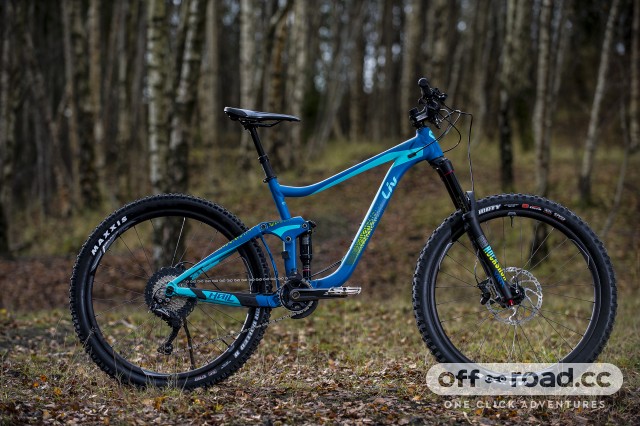

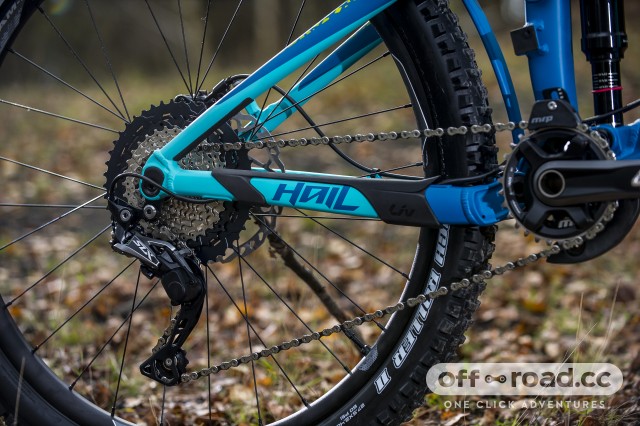
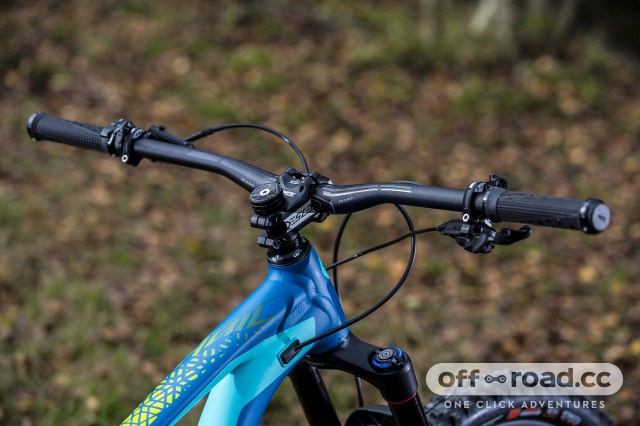

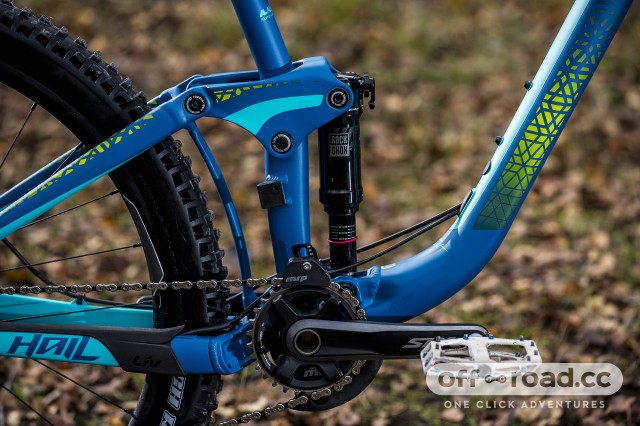
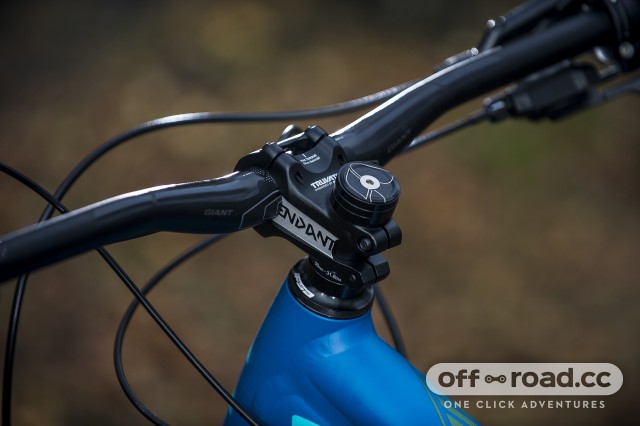
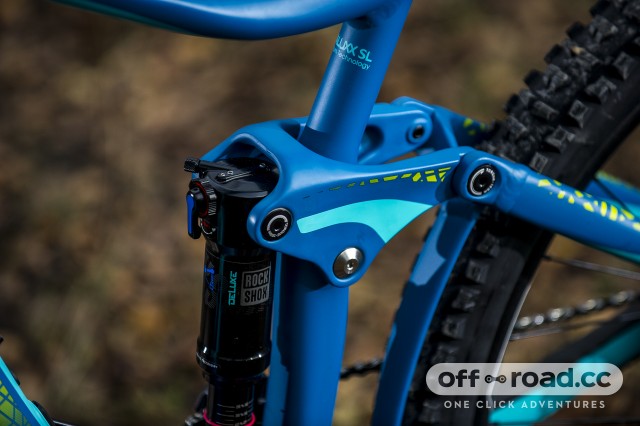



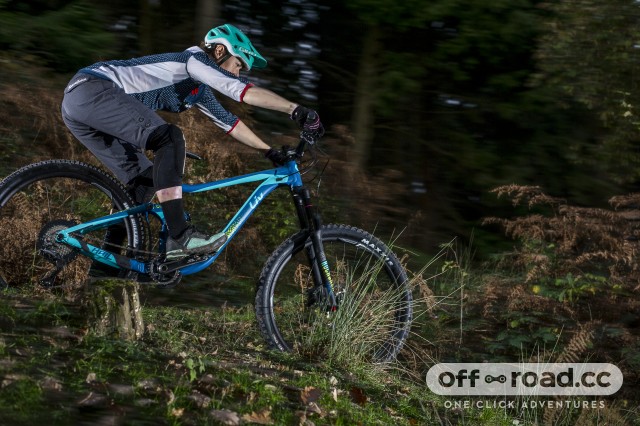

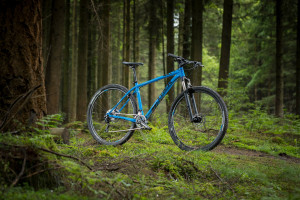









Add comment